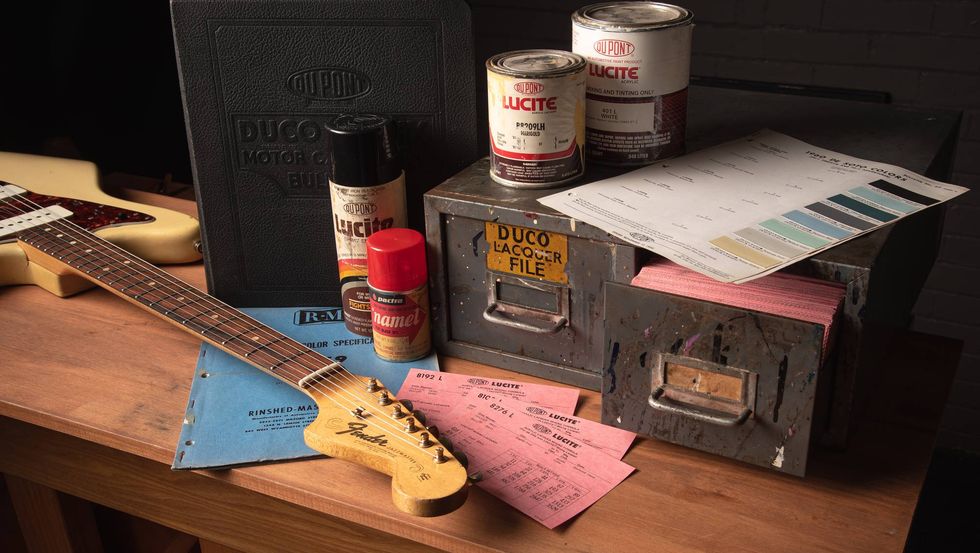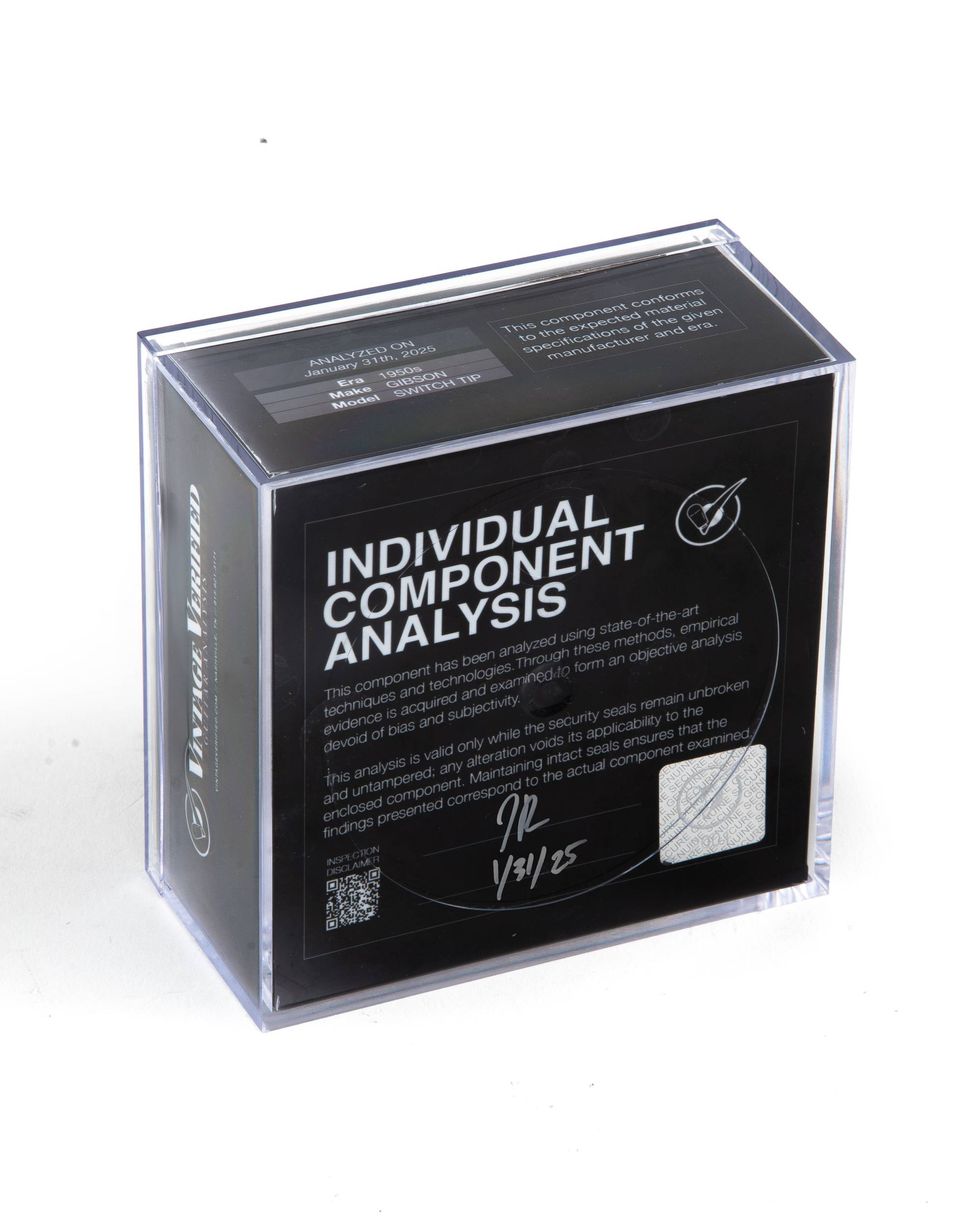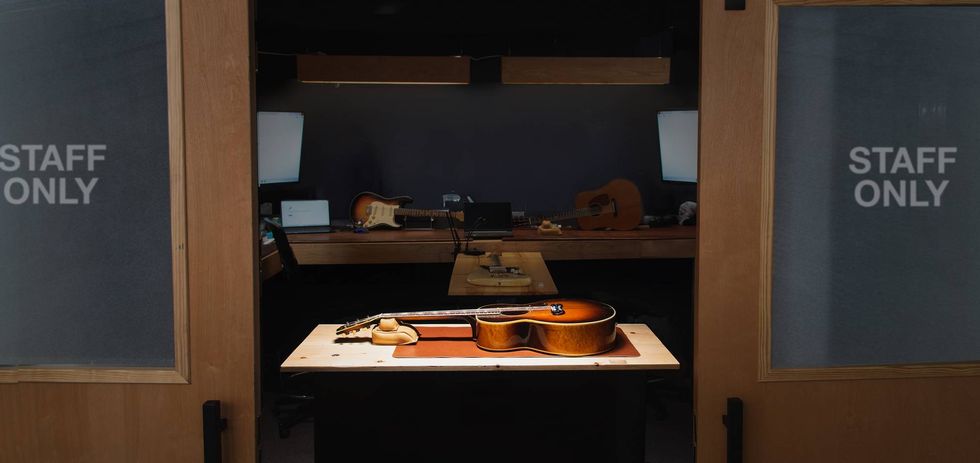Since founding Ukraine-based Piod Effects in 2009, owner/engineer Aleksey Malyshok has been trying to replicate the monstrously heavy tones of amps such as the Mesa/Boogie Dual Rectifier and Peavey 5150 in a stompbox. After much research, he concluded that the best way to achieve this feat was to eschew the diode-based clipping used in most of today’s distortion pedals.
This led to the development of the What You Want distortion pedals, including the recently released What You Want 2 and its compact little brother, What You Want 2 Micro. Despite its diminutive size, WYW2 Micro boasts the core circuitry and fire-breathing tone of its big brother, but with simpler, more user-friendly controls.
You Get What You Need
At the heart of the WYW2 Micro is a unique “cascading constraint” circuit, which employs op-amps and a pair of FETs to produce amp-like overdrive that’s tight and defined no matter how much drive you dial in. This analog circuitry features custom-designed DC and audio noise filtering and a relay switch for quiet-as-a-mouse true bypass.
The pedal works with standard 9V power supplies, though you can also run it with a 15V power supply too. (There is no battery option, and the power supply is not included.) If your amp has an effects loop, you can feed the output of the stompbox to your amp’s effects return, using the pedal as a standalone preamp.
With just three controls—volume, gain and tone—operation couldn’t be simpler. The gain knob sets the distortion amount. Volume controls a discrete booster circuit, which reportedly provides more headroom than the output voltage divider-based circuits on most distortion and overdrive pedals.
Aggressive Perfector
While the WYW2 Micro has limited tone-shaping capabilities compared to its bigger sibling, the single-knob tone control is versatile, boosting lows or highs when moved further left or right, respectively. The noon-to-1 o’clock position yields slightly mid-scooped tones that are a good starting point for dialing in your own sounds.
Ratings
Pros:
Articulate metal distortion. Superb detail. Tube-like response. Excellent tone control range. Quiet till you hit the strings.
Cons:
Lacks the versatility of its bigger brother, the WYW2. No battery option.
Tones:
Ease of Use:
Build/Design:
Value:
Street:
$180
Piod Effect What You Want 2 Micro
piodfx.com
I can safely say I haven’t encountered many pedals that can rival the WYW2 Micro’s crushing gain and finely tuned tone control. It’s free of piercing highs and muddy lows, even at the most extreme settings. It’s difficult to get a bad sound out of it, or at least one that wouldn’t suit some other high-gain musical scenario.
With a Gibson Les Paul Custom, a Marshall JCM800 set fairly clean, and the pedal’s gain and tone knobs set to noon, I was treated to a smooth-sounding, slightly mid-scooped wall of thrash-friendly tone. The attack was quick and highly responsive—essential qualities for speedy and/or progressive forms of metal. The circuit definitely sounds tube-like, without the compressed highs sometimes encountered in high-gain solid-state amps. I expected the attack to soften and slow as I turned up the gain. To my surprise it remained consistent no matter where I placed the knob.
The WYW2 Micro’s biggest strength is the detail you can hear at high gain. Full and broken chords ring out evenly, making the pedal ideal for ruthless riffage that integrates complex chords, a la the Dillinger Escape Plan. An astonishingly low noise floor adds to the pedal’s tightness. Notes and chords never deteriorate into a mess of white noise. It’s a breeze to cop a wide range of star-studded metal tones, from the mid-scooped mayhem of Dimebag Darrell and Fredrik Thordendal to the screaming midrange of Jeff Hanneman and Scott Ian.
Even understated gain settings have enough muscle for classic metal riffing and lead work. Placing the gain knob around 10 o’clock and the tone control a hair past 2 o’clock yields a fat ’80s British metal tone that conjures K.K. Downing’s roaring Marshall from Judas Priest’s tour de force Priest…Live! But while the pedal responded to rolling down the Les Paul’s volume knobs for gritty interludes, the distortion doesn’t dissipate enough for convincing clean tones. The midrange and the lows thinned out too, forcing me to dial back the Marshall’s treble and presence knobs on several occasions to balance things out.
The Verdict
The Piod What You Want 2 Micro’s clever circuit provides many things guitarists desire from high-gain distortion pedals: straightforward controls, minimal background noise, and response that’s scarily close to that of a punishing high-gain tube amp. It packs more distortion than even the most gain-hungry guitarists are likely to use. This all-or-nothing attitude probably won’t win it high marks with blues or classic rock players. But for die-hard metalheads, this pedal’s strengths give it the upper hand over many competing high-gain stompboxes.









![Rig Rundown: John 5 [2026]](https://www.premierguitar.com/media-library/youtube.jpg?id=62681883&width=1245&height=700&quality=70&coordinates=0%2C45%2C0%2C45)









![Rig Rundown: Russian Circles’ Mike Sullivan [2025]](https://www.premierguitar.com/media-library/youtube.jpg?id=62303631&width=1245&height=700&quality=70&coordinates=0%2C0%2C0%2C0)







